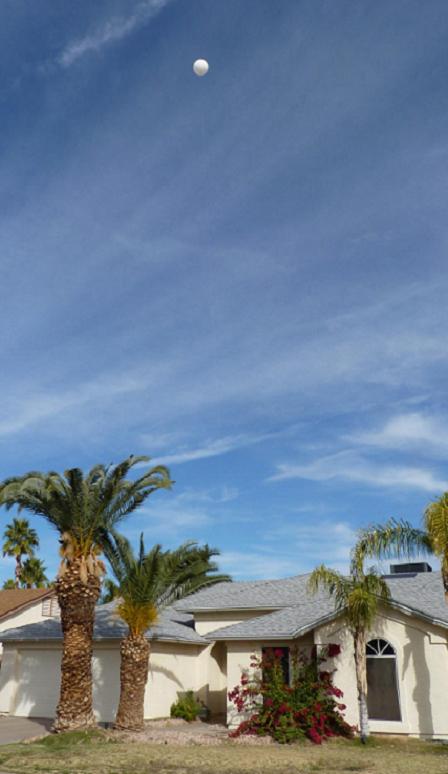K7LOL Balloon Vertical
My first somewhat effective low frequency antenna was the 53 foot end fed horizontal wire. I knew I could do better if I had more space. Alas, I was forced to deal with the space limitations of an urban property. But what if I extended my wire vertically? After much research I decided to try a balloon lifted vertical wire.

The project turned out to be far more daunting than I imagined. The entire payload and lift mechanism had to weigh less than one pound in order to use readily available helium balloons. High break strength aircraft wiring, balsa wood dowel rod and monofilament fishing line provided my solution. These items along with a 4 foot diameter balloon and a very expensive tank of helium gas yield ...
Balloonenstein !
The wire is 125 feet long providing an effective aerial and loads up well on 40m, 80m, and 160m with matching transformers and tuner. I use a short piece of 20 lb test monofilament fishing line as a safety to insure the balloon will not take wire along for a ride in case of a failure. FAA regulations restrict the overall height to 200 feet in this area and quite surprisingly I was questioned about potential hazards the first evening the antenna was in the air.

results were astounding. I launched Balloonenstein during the CQ WW contest in November and again for the 160m contest in January. While cherry picking DX during the contests (34 new ones), I made notations about my digital mode transmitted signal reports in Asia and Europe. Balloonenstein was typically a full 10 db better than my 36 foot aluminum vertical. The deployment of this approximately half wave sky hook opens the door to DXCC on 80 meters even here in the city.
KLorG? | Page Top ^ | Next

